2017 Aston Martin DB11 Review

The 2017 Aston Martin DB11 may start at more than $212,000 but the noises produced as its engine reaches crescendo are worth every wheatback.
Wending my way skyward through the mountains near San Diego, this high-dollar grand tourer proved itself on every road surface and around each decreasing-radius corner I encountered, clearly demonstrating it’s the whole package, and so much more than just an internal-combustion jukebox.
The most powerful DB ever, this beauty is Aston’s latest model and the first vehicle to launch as part of its ambitious “Second Century” revitalization plan, a product push unlike any before in the 100-plus-year-old firm’s history. This exhaustive effort should result in a completely revamped model range that will at long last include a utility vehicle.
Get the Flash Player to see this player.
FAST FACTS
| Engine: | 5.2-liter twin-turbocharged V12 |
| Output: | 600 hp, 516 lb-ft of torque |
| Transmission: | 8-speed automatic |
| US Fuel Economy (MPG): | 15 city, 21 hwy, 17 combined |
| CAN Fuel Economy (L/100 km): | 15.5 city, 11.4 hwy, 13.7 combined |
| US Price: | Starts at $214,820, including delivery fees |
| CAN Price: | Starts at $289,610 (est) |
The Power of 12
But future products are irrelevant in the here and now, especially when the DB11 is demanding full attention. Providing the soundtrack for my thrilling day of hill climbing was a lusty 5.2-liter V12. Rather than cutting cylinders or futzing with hybridization technology, Aston Martin stayed true to its heritage by including a proper engine in this GT car.
Supposedly all new from oil pan to intake, this powerplant shares but a couple bolts with the old Ford-derived V12 that made the company’s modern offerings so memorable. Augmented by a pair turbochargers and some interesting technology, it’s both incredibly muscular and unexpectedly efficient.
With a 600-horse stampede shooting you from corner to corner, 60 miles an hour is accessible in less than 4.0 seconds. Thanks to a duet of turbochargers forcing atmosphere into its gullet, this engine delivers 516 lb-ft of torque, enough to write a check for 200 mph, which is where the DB11 finally runs out of breath.
With unnatural aspiration, husky displacement and sky-high-performance intentions, it’s not unreasonable to think the DB11 would have an insatiable appetite for high-octane spirits. It certainly likes quaffing petroleum distillates but at a rate far less ridiculous than you might expect. Per the EPA’s number-crunchers, it should deliver 15 miles per gallon (15.5 L/100 km) in city conditions and 21 (11.4 L/100 km) on the open road. Combined, it stickers at a not-unreasonable 17 mpg (13.7 L/100 km), making it economical enough to pull an Al Capone, to sidestep taxes like the notorious Chicago gangster… well, the gas-guzzler tax at least. I don’t advocate shortchanging the IRS (or CRA for you Canadian folk).
An important feature that helps improve efficiency is cylinder deactivation. Under light loads, one of the V12’s banks shuts down, effectively turning it into an inline-six. The engine will periodically alternate which row of cylinders is disabled to keep the catalytic converters hot. Unlike other systems, you never know when the DB11 is running at half strength, as the changeover is totally imperceptible, with no weird vibrations or uncouth noises betraying its clandestine activities.
Helping to ensure rapid performance and reasonable efficiency is a ZF-sourced eight-speed automatic transmission. Mounted toward the vehicle’s rear and spun by a carbon-fiber prop-shaft, it will rip through its ratio stack if you’re in a hurry, though it’s just as willing to slur gear changes while slogging through traffic or casually cruising.
New from the Bottom Up
Aston Martin’s new DB11 may be one of the prettiest cars available today, but don’t let that lovely face fool you; this machine’s underlying structure is as beautifully engineered as its sheet metal is sculpted.
Like other models in the company’s lineup, this car’s underlying platform is made from aluminum, an intricate collection of stampings, extrusions and castings. Together, these components result in an architecture that’s lighter, stiffer and more space efficient than what was offered by the company before.
A welcome benefit of this new platform is space. Ingress and egress are greatly improved thanks to larger door apertures, plus the trunk has grown enough to accommodate a full set of luggage. As exotic cars go, this one is quite easy to live with.
Further keeping mass in check, the DB11’s body panels are comprised of advanced materials. This mix allowed designers to go hog wild with styling. For instance, the front-hinged hood, complete with headlamp cutouts, is supposedly the largest single piece of aluminum used in the automotive industry. It took 24 simulations and three tooling reworks to dial it in just right.
Another undeniably cool design element of this new Aston Martin, one that’s not only beautiful but also functional, is its AeroBlade virtual spoiler. Ducts in the C-pillars funnel rushing wind through the body where it’s vented out the decklid. At speed, this creates a jet of disturbed flow, which helps reduce lift. A small deployable spoiler is also included when maximum stability is required.
Despite its advanced engineering, there is one notable omission at this car’s back end: an exterior trunk release, something that’s quite annoying. To access the boot, you’ve got to pop it from inside or dig the key fob out of your pocket or purse.
The Drive
The Aston Martin DB11 is a certifiable rocket, hitting redline in a blink when you crack the whip, propelling you to illegal velocity in mere seconds. This much should be obvious given its output figures. The real question is, did Aston deliver a well-rounded package or just a straight-line speedster?
In rigorous testing, this car proved to be the whole package. For starters, traction provided by its bespoke Bridgestone tires is incredible. This car never seems to let go, plus it’s so incredibly balanced while negotiating corners. There’s no sense it’s going to suddenly lose grip and send you flying into a guardrail. Everything is balanced and predictable.
A big debt for this poise is owed to the DB11’s adjustable dampers, which offer three stiffness settings. I found the extra compliance of GT mode, the softest of the trio, to provide the best on-road performance; Sport and Sport + are a bit much for everyday driving but are probably ideal for the track.
Likewise, this car’s powertrain offers three driver-selectable modes. Here, I thoroughly enjoyed the most aggressive, which sharpens the throttle response, speeds up gear changes and provides a louder exhaust note, perfect for sharing the V12’s glorious music. And props to Aston Martin because the engine sound is all natural; no synthesized BS is pumped through its sound system as in some other luxury cars.
The DB11 features electrically assisted power steering, Aston Martin’s first application of this technology. Fortunately for enthusiasts, it works well. With hefty weighting and a quick ratio, it makes placing the car exactly where you want a breeze, though the somewhat large A-pillars do obscure forward visibility a bit when negotiating winding roads, so be warned about that.
As for brakes, the pedal is unexpectedly soft under foot, but stopping power is never in doubt thanks to this car’s six-piston front calipers, which clamp on two-piece steel rotors that are nearly 16 inches in diameter (400 mm).
During my extended test drive, the DB11 proved to be an exemplary Grand Touring automobile, fast, engaging and all-day comfortable. However, I would be remiss for not mentioning a few peculiarities that popped up. For starters, a low-oil warning greeted me first thing in the morning, though company representatives assured me everything was fine and the message eventually extinguished itself. Also, a check-engine light was illuminated throughout my time with the car and at one point the key fob was not recognized, though a restart of the engine corrected this issue. Slack can be given since my test model was a prototype car and one of the first few DB11s imported to the U.S.
Leather-Lined Cruise Missile
Taking a pause from all the canyon carving to catch my breath, I was impressed by the 2017 Aston Martin DB11’s interior. Despite its sporting intentions this GT car’s cabin is sensually styled and beautifully constructed.
Practically every surface inside is wrapped in premium leather or covered in some sort of high-end material. One of the most eye-catching embellishments available is a chopped carbon-fiber trim, with an intricate pattern resembling a quilted maple wood stained black as coal.
As with Aston’s other products, power-seat controls are mounted on the transmission tunnel and push-button gear-selector high on the dashboard. Mercifully, one thing they’ve done away with is their previous infotainment technology. In its place is Mercedes-Benz’s COMAND system, a speedy and simple-to-use offering that’s light years ahead of Aston Martin’s previous offering.
A glove compartment is still absent, but at least there’s a shoebox-sized cubby beneath the center console armrest, which conveniently slides fore and aft at the push of a button. As for passenger accommodations, there are back seats in name only; consider this storage space for groceries or an extra duffle bag.
The Verdict: 2017 Aston Martin DB11 Review
The 2017 Aston Martin DB11 provides all the sights, sounds and experiences the British marque is famous for while improving in nearly every area where they’ve typically been deficient. It’s fast, sounds musical, looks even better and drives like a dream. And if these assets weren’t enough, it also provides a comfortable, high-quality interior, replete with modern electronics. Aside from a few minor grievances, this could be the best road-going Aston Martin ever built and bodes well for the firms next 100 years. Deliveries in the U.S. have already begun, with about 100 of these beasts on the road right now.
Discuss this story on our Luxury Lifestyle Forum
LOVE IT
- Well-Balanced Chassis
- No Gas-Guzzler Tax
- NASA-Grade Thrust
- Long-Haul Comfort
- Premium Interior
- Gorgeous Styling
- Mellifluous V12
LEAVE IT
- No Exterior Trunk Release
- Useless Back Seat
- Soft Brake Pedal
- Chunky A-Pillars

Born and raised in metro Detroit, Craig was steeped in mechanics from childhood. He feels as much at home with a wrench or welding gun in his hand as he does behind the wheel or in front of a camera. Putting his Bachelor's Degree in Journalism to good use, he's always pumping out videos, reviews, and features for AutoGuide.com. When the workday is over, he can be found out driving his fully restored 1936 Ford V8 sedan. Craig has covered the automotive industry full time for more than 10 years and is a member of the Automotive Press Association (APA) and Midwest Automotive Media Association (MAMA).
More by Craig Cole



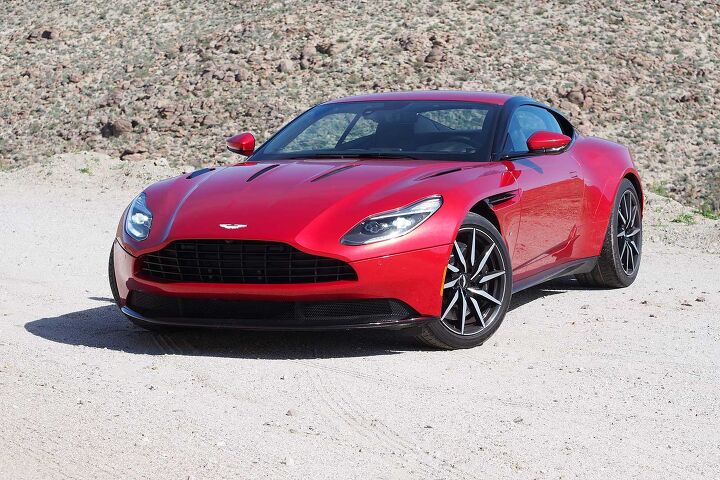



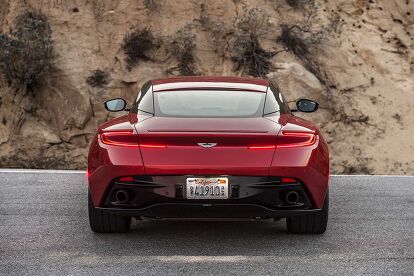














































































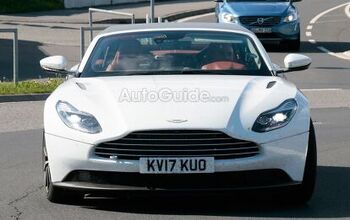

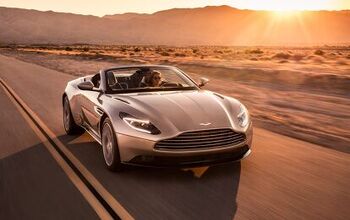
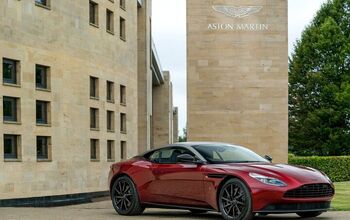
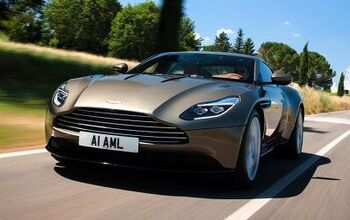






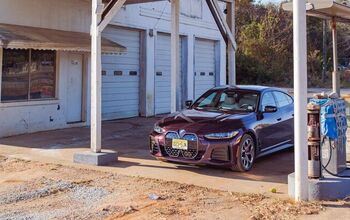


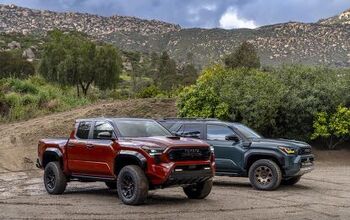
Comments
Join the conversation
Why is Craig Cole's voice & delivery so annoying ? He calls the A pillar too thick and the rear seats a 'leave it ' negative comment . The A pillar is a crash and structural stiffener part of the chassis . The rear seat is just there for your smaller passengers ( children ) , or to control insurance premiums because it is described as a 2 + 2 car . He should know these facts !